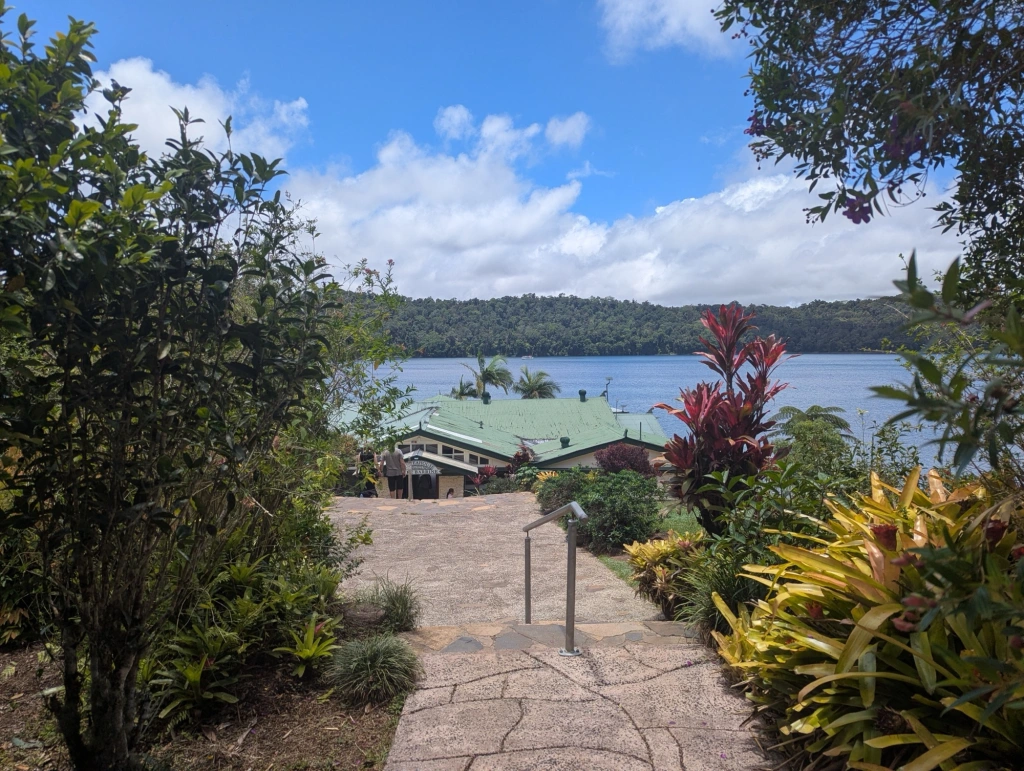The sun was shining brightly when we drew back the curtains so we decided to spend the morning by taking a stroll along Cottesloe Beach. It’s located 11 km south west of Perth’s city centre. We took the car but it’s also possible to get there by taking the Fremantle Line train from Perth City Station followed by a 20 minute walk along Forrest Street to the sea.
It was around 10.30 a.m. by the time we arrived and as it was a Sunday morning the seafront was already crowded and it looked as if it would be difficult to find anywhere to park. However, luck was on our side as we noticed a car reversing out of a space and we managed to nip in quickly. As with almost everywhere we’d taken a car on this trip, parking was free of charge.
Cottesloe Beach is one of Perth’s most popular with its pure white sandy beach stretching for more than a kilometre overlooking the crystal clear Indian Ocean. We wandered along the beach front path towards North Cottesloe and looking down onto the beach we could see families soaking up the sun, swimming and surfing.
The wide, grassy esplanade is shaded by Norfolk pine trees offering plenty of shade from the hot sun and picturesque spots to settle down for a picnic. The beach is patrolled by the local Cottesloe Surf Life Saving Club.
Cottesloe beach has a protected swimming enclosure from October to March to protect swimmers from sharks. A few days before our visit we saw a report on television of a 2m long shark being spotted circling off shore resulting in the beach having to be closed as a precaution.
It was a lovely place for a morning stroll, taking in the sweeping ocean views, glancing at the permanent foreshore sculptures and then stopping off at the Long View Cafe for our morning cups of cappuccino before returning to the car.

We weren’t back for long as the friends we were staying with had booked a table for a late lunch in the Perth Hills which we were looking forward to. We enjoyed a scenic drive through the forested valleys and granite outcrops of the Darling Ranges taking around 45 minutes to reach our lunch venue.
The Mediterranean climate of the Perth Hills with its warm, dry summers and cool nights ripens grapes to perfection. The first vineyards were developed back in the 1880’s and the area has since flourished into a well established wine district with many small vineyards now scattered throughout the region.
Our lunch reservation was at the Plume Estate Vineyard in the Bickley valley. The winery has a rustic appearance from the exterior and once inside, it’s absolutely beautiful. My friend Alison had requested a table on the terrace from where we had stunning views overlooking the vines.
Plume offers a selection of sharing platters and tapas dishes ideal for a hot day so we ordered one of their Plume Platters which comprised a selection of cold meats, cheese, olives, fresh fruit, bread and dipping oils. This would have probably been sufficient to serve four but just to be sure we couldn’t resist ordering a Flammkuchen. This thin, crispy flatbread topped with ham, spring onions and crème fraiche tasted delicious coupled with glasses of their refreshing Plume Estate Verdejo.
It was the perfect location for a lazy Sunday afternoon spent sipping locally produced wine and sharing the delicious platters with good company. On our return to Perth, we stopped off at a couple of viewpoints from where we were able to see the city skyline in the distance beyond the verdant countryside.
Back at our friend’s home our day wasn’t quite over as Alison informed us that we’d been invited to go along to a neighbour’s house as they were hosting a pre-Christmas street party. This was really exciting for us, not only to meet some of the families living nearby but also to experience a Christmas party with the sun beating down and temperatures averaging 37 degrees Celsius.
Back home in the U.K. we would think of a street party as a row of tables joined together along the road whereas this one was taking place in the back garden of someone’s home. We spent a lovely couple of hours chatting to Alison’s friendly neighbours, drinking more wine and being tempted with tasty treats from the buffet table that families had brought along with them. The end of another lovely day spent in sunny Perth.




